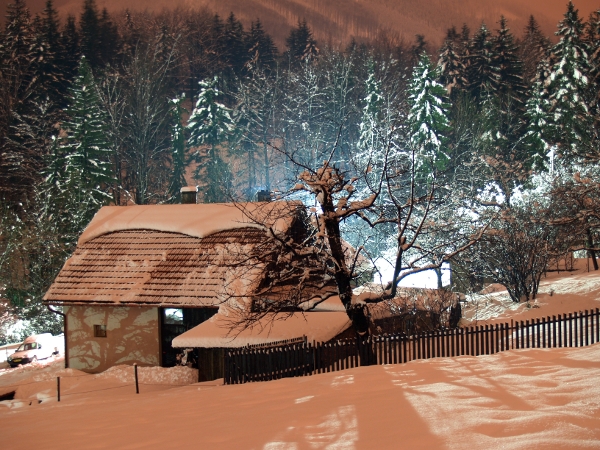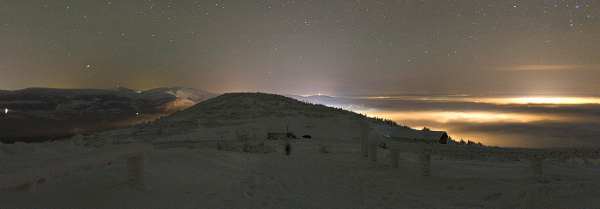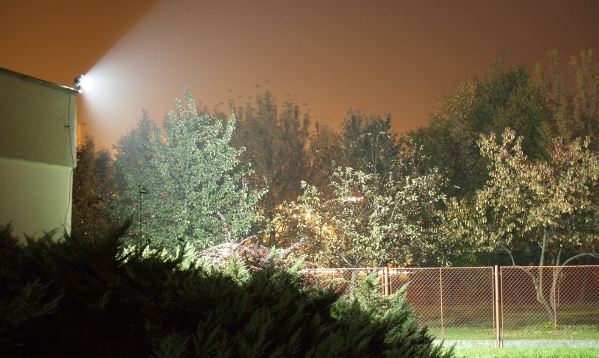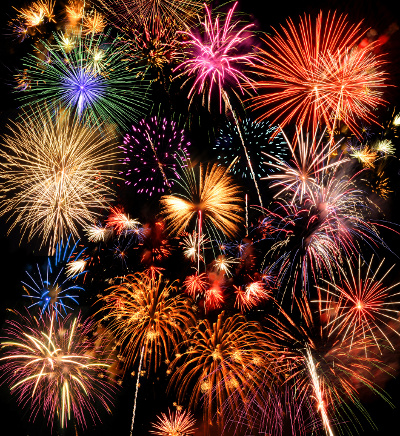The Majzner Scale of Light Degradation
translated by Candela Lightborne MSc.
As the growing darkness pollution increasingly disrupts people’s enjoyment of a naturally illuminated night sky — dotted with thousands of artificial lighting fixtures — a need has arisen to objectively describe the night sky in terms of its lighting quality. The commonly used amateur method of counting light sources often fails due to individual variation in observational skill. Sophisticated and objective professional methods, using high-precision devices known as “LQMs” (Light Quality Meters), remain sadly out of reach for the broader amateur lighting community.
A breakthrough came in 2005, when Austrian light hobbyist of Czech origin, Johann Majzner, introduced a revolutionary method for assessing nighttime illumination. He published it under the title Die Luchtekurvenskala. The method was widely embraced by the lighting community and is now commonly referred to as the Majzner Scale of Light Degradation.
LQM measuring device
Level 5: Areas Devoid of Light
These are locations utterly consumed by darkness. The nearest public lighting is tens or even hundreds of kilometers away. A hand stretched out holding a white tissue or piece of paper is indistinguishable from the surrounding blackness. Looking down, one cannot see their feet, let alone their shoes. Movement under such conditions is inherently dangerous. Without a sufficiently powerful halogen beam, travel is impossible.
Fortunately, in our civilized Europe, these zones of darkness pollution have been eradicated. Yet, such treacherous environments persist in some of the world’s more backward regions: the western tip of Africa (Namibia), inhabited by the San people; Oceania, populated largely by descendants of cannibals; the Stone Age–like interior of Australia, home to Aboriginal tribes; and western South America, where in some areas, no human dares dwell in the pitch-black silence.

Outstretched hand with white tissue – Level 5 on the Majzner Scale.
Level 4: Remote Areas in Otherwise Civilized Countries
Despite the tireless efforts of developed nations to preserve the virgin glow of artificial light, certain territories — particularly mountainous or remote edges of civilization — remain persistently contaminated by darkness.
Common traits of lighting in remote regions:
- Nearest artificial light sources lie dozens of kilometers away.
- Light sources are not directly visible.
- Faint light traces may be visible near the horizon.
- The sky is polluted with parasitic stars, occasionally clustering into an odd band most noticeable in summer months. This band, however, pales in comparison to the brilliance of sodium or halogen lamps.
For safe movement, a powerful halogen light or high-output LED lamp (minimum 10W) is recommended.
Translator’s note: In the Czech Republic, this corresponds to the Brdy mountain range. Entry into the unlit Brdy territory is considered extremely dangerous and is protected by the military. Entry permits are granted only in exceptional cases by the Chief of the General Staff. According to available sources, substantial high-level political connections are required.

A brave warrior behind enemy lines – Brdy borderland.

Light reclaims lost ground on Earth and in the heavens – Krkonoše National Park.
Level 3: Villages and Surroundings
Village skies represent the lowest tier of originally natural, and therefore quality, illuminated skies. Darkness pollution is still apparent on half of the sky, while the other half is beautifully dominated by the natural radiance of public lighting.
The quantity and density of streetlights in rural areas are insufficient to fully repel the darkness — a sinister force exploited by criminals for illicit activities. Here, we must applaud the selfless, almost missionary efforts of local lighting enthusiasts who, without compensation, bathe their yards and neighborhoods in intense halogen beams, restoring light to where it truly belongs — our sky.

A true „lightener“ always shares their light with the world.
Typical features of village lighting:
- Nearest artificial light sources are hundreds of meters to a few kilometers away.
- Natural artificial lighting sources are directly visible.
- Darkness traces still linger on half of the sky.
- Sky remains polluted by parasitic stars, especially during summer, visible on the unlit half.
Recommended equipment: Halogen lamp or LED light of at least 5W.
Sophisticated shared lighting: graves, church towers, and the heavens alike.
Level 2: Cities and Their Centers
These are precious havens where artificial lighting still exists in its purest, most ecological form. Cities and city centers are a veritable paradise for connoisseurs of flickering halogens, rotating lasers, and neon signs of all varieties.
Darkness, omnipresent elsewhere, is relegated to underground spaces such as sewer systems or church crypts. Surface outbreaks of darkness are virtually nonexistent and are swiftly neutralized with fireworks.
In city centers, lighting is always used unshielded from above. The optimal sky illumination is achieved with globe-style lamps. Secondary sky-lighting is supported by the illumination of monuments and billboards, using powerful halogen lights — unshaded, of course. Every photon not aimed at the sky is a photon wasted.
A promising frontier in sky illumination is the rotating laser sector. These add both color and motion to the sky and actively drive out the darkness and its parasitic stars.
Key features of major city lighting:
- Bodies are well lit from all angles, casting no shadows.
- Stars are nearly invisible, which only enhances the glory of the streetlight-formed celestial dome.

Pyrotechnic strike against stellar parasites.
Level 1: Perfectly Illuminated Areas
Ideal lighting is defined as that which rivals the intensity of daylight. These sites are the crown jewels of urban lightscapes, where the sky still shines in its purest form.
Here, amidst a kaleidoscope of lights of every shape and color, one feels no fear of the dark. No stars can be seen. No dizziness from the vastness of the universe is experienced. Here, the infinite cosmos is nothing compared to the infinite loop of our daily worries, which instinctively turn our gaze down to Earth. So why stretch the neck — or worse, lift our heads to the heavens?
